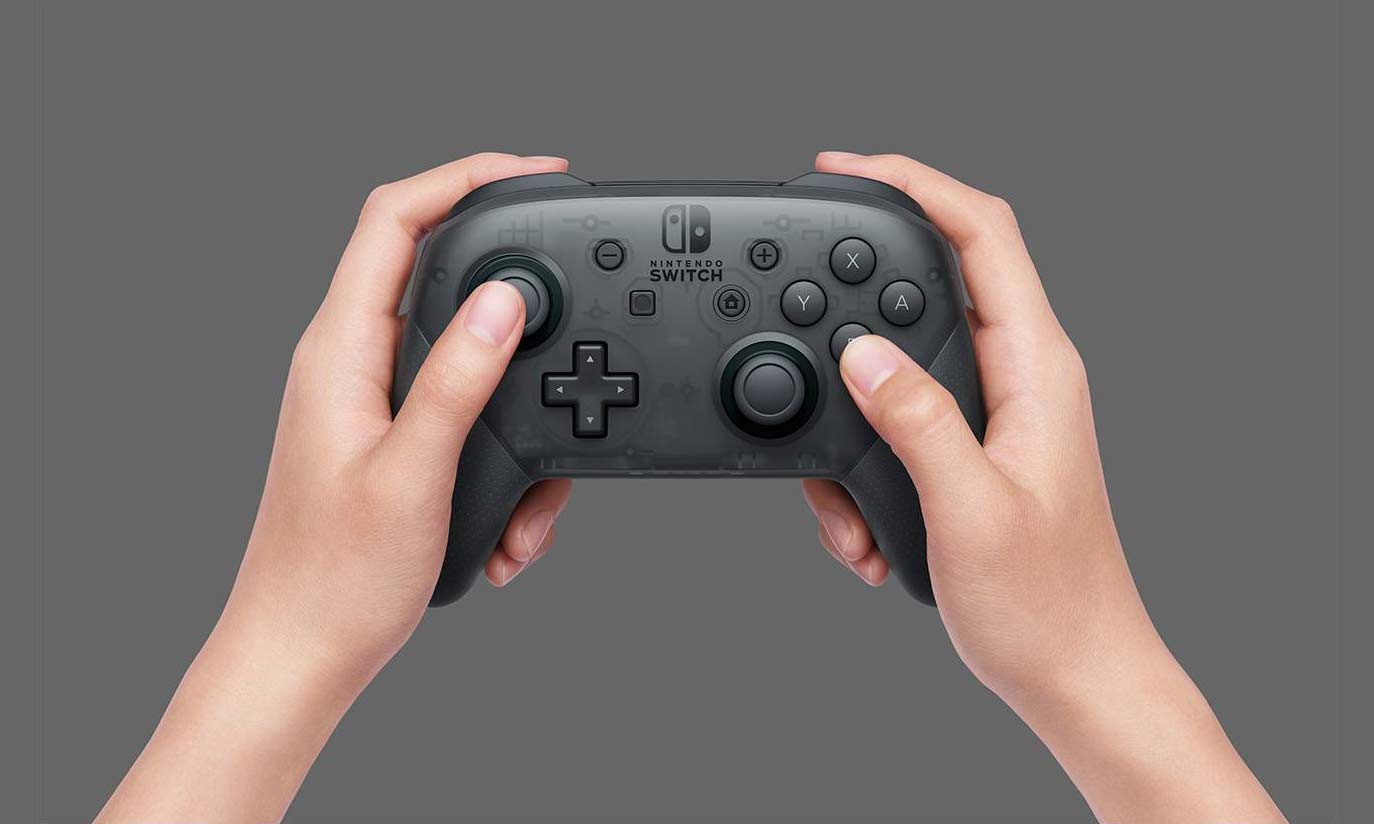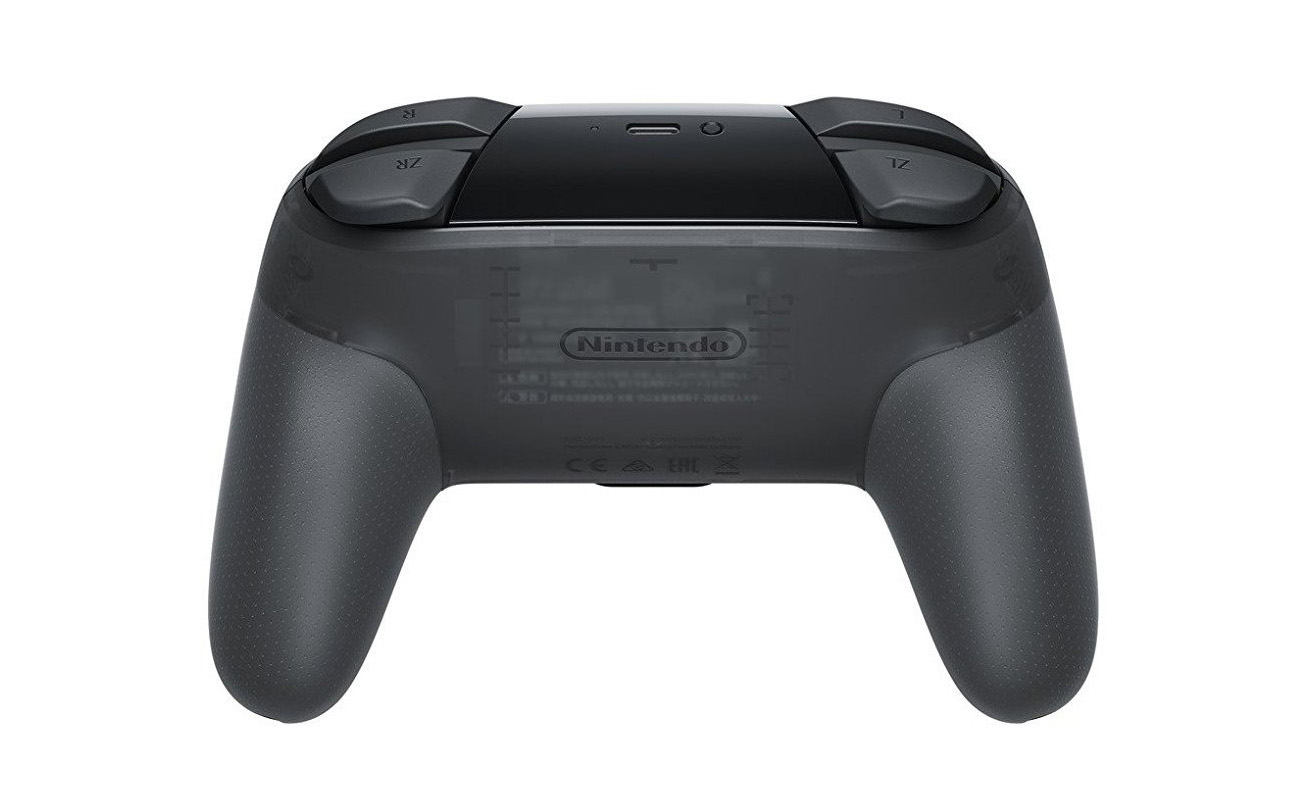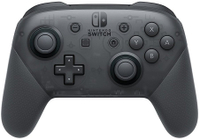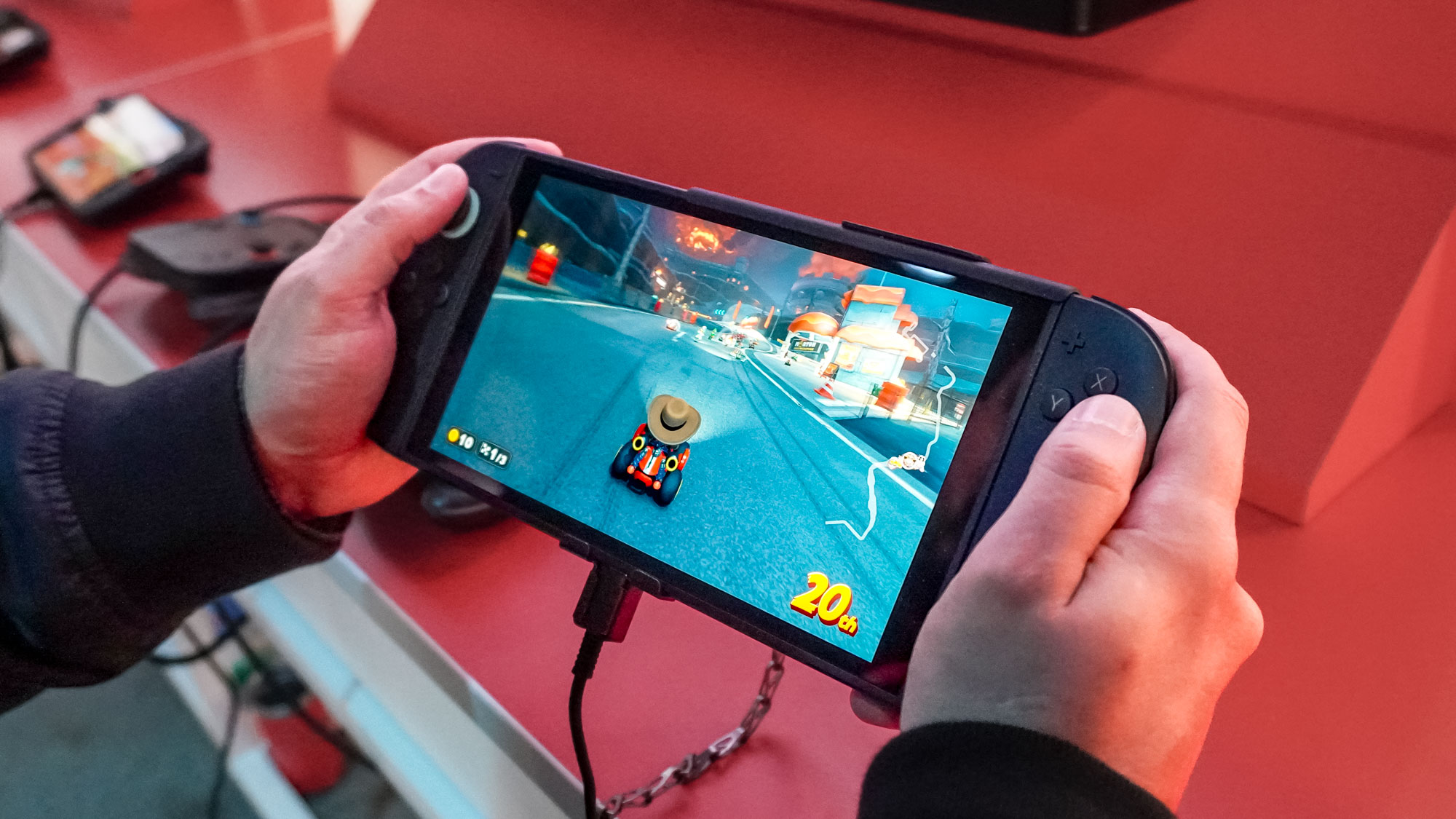Should You Buy a Nintendo Switch Pro Controller?
The Nintendo Switch Pro Controller is tempting, but is it really worth $70?
As gaming consoles go, the $300 Nintendo Switch is not unreasonably expensive (if you can find one, at any rate). Where you’ll pay through the nose is for its accessories: $20 for a decent case; $30 for Joy-Con chargers; $90 for an extra dock. However, the likeliest accessory to throw the average consumer for a loop is the $70 Nintendo Switch Pro Controller: a traditional Xbox 360-style peripheral that seems ideally suited to long play sessions at home.

By default, the Switch comes with two small Joy-Con controllers, which both plug into a mounted grip that approximates a regular controller. It’s not a terrible way to play long-lasting and/or demanding games like The Legend of Zelda: Breath of the Wild or Ultra Street Fighter II. The question is: Is it really worth $70 just to get something that’s marginally more comfortable?
What Is It?
I pondered this exact question back when I first got a Switch and was gearing up to play The Legend of Zelda: Breath of the Wild. I don’t mind spending money on an accessory that will be truly useful, but for the price of a Pro Controller, I could have gotten a brand-new Switch game with enough left over for a six-pack of decent domestic beer. Not to mention: The Switch has sold remarkably well, but so did the ill-fated Wii U when it first came out. Investing a ton of money in accessories for the Switch might not be a great idea if the system tapers off after a year or two.

In case you’ve never seen one, the Switch Pro controller is very similar to a number of other controllers for other consoles, PCs and mobile devices. There are two analog sticks (the right-hand stick is lower than the face buttons, more similar to the Xbox design than PS4), a D-pad, four face buttons, four shoulder buttons and a number of navigational buttons in the center. The device connects via Bluetooth to both the Switch and PCs, and is a bit bigger and heavier than the Joy-Con grip.
Why You Should Buy It
I polled my co-workers who have been using Switches for longer than I have to see if the expensive accessory could enhance my upcoming adventure in Hyrule. Some have Pro controllers; some don’t. Of those who don’t, some want them, and some are content to go without.
“If you play on your TV a lot, a Pro controller is almost essential,” said Sam Rutherford, former senior product review analyst for Tom’s Guide. “The ideal setup is to have a Pro controller for use at home … so you can leave your Joy-Cons docked at all times.” This way, he said, you can just pick up your Switch and leave at any time, rather than having to go through the arduous process of disconnecting the Joy-Cons from the grip and reattaching them to the console proper.
Rutherford also pointed out that Joy-Cons don’t charge in the standard controller grip; instead, you have to buy a separate $30 charging grip — and a $70 controller is arguably a better deal than a $30 grip whose only purpose is to do something the console dock already does.
A Pro Controller could also help, depending on what genre of games you plan to play. “Fighting games would suck on the Joy-Cons,” Andrew Freedman, staff writer for Tom’s Guide, pointed out, explaining that the more traditional D-pad on the Pro Controller could be almost vital for pulling off difficult combos.
The Pro Controller also simply feels good to hold. That’s not a trifle if you’re going to sit down and play a deep, involving game for a few hours at a time. “After owning a Pro Controller for a few months, I can confidently say that it holds its own with the DualShock 4 and Xbox One pad. It’s one of the comfiest and highest-quality Nintendo controllers I’ve ever held,” said Mike Andronico, senior editor at Tom’s Guide.
MORE: Nintendo Switch Review: How Nintendo Won Me Back
Why You Should Skip It
On the other hand, there’s one huge reason to avoid the Pro Controller: The Switch is partially (and some would argue primarily) a portable console. As such, the Joy-Cons attached to the tablet screen are the ideal way to experience any game, regardless of how intricate the controls can be.
“I played all of Breath of the Wild and only connected the Switch to the TV once,” Freedman said. “To me, the Switch is the best-ever handheld console, and I don’t need a Pro Controller for that.”
Andronico agreed, explaining that he generally plays the Switch on the go, limiting a Pro Controller’s utility. "Considering that I spend about 80 percent of my Switch time in handheld mode, I still wonder if I’ve gotten my full $70 out of the controller," he said.

Even Rutherford, who was generally pleased with his Pro Controller purchase, hasn’t used it that much yet. “I use the Switch, 90 percent of the time, in handheld mode, whether it’s on an airplane, or car trip, or in my bedroom because someone else is using the TV.”
Another point worth considering is that the Joy-Cons in the grip approximate the look and feel of a regular controller pretty well. If you elect to play with the Joy-Cons in the grip rather than a Pro Controller, you’re not taking a huge step backward. It’s not quite as optimized for the average player’s grip, but it’s hardly uncomfortable, either.
MORE: Nintendo Switch Is a Blast to Play, But It Needs More Games
Bottom Line
The biggest argument in favor of the Pro Controller is that it’s extremely comfortable for at-home setups; the biggest argument against it is that it’s almost totally superfluous if you use the Switch on the go. Both are valid, depending on how you intend to use the Switch — and how you actually use it, once you’ve had it in your possession for a few months.
Personally, I picked up a Pro controller, and haven't been too disappointed with it. It's extremely comfortable, and has a much better button layout for long, involved single-player adventures. It also works fairly well on PC, provided you're willing to rejigger a few of the controls manually. On the other hand, $70 is a little too much to ask, considering its tremendous similarities to the Xbox One and PS4 controllers, which cost about $50 to $60.
Consider this peripheral a worthwhile luxury, but not a necessity.
Sign up to get the BEST of Tom's Guide direct to your inbox.
Get instant access to breaking news, the hottest reviews, great deals and helpful tips.
Marshall Honorof is a senior editor for Tom's Guide, overseeing the site's coverage of gaming hardware and software. He comes from a science writing background, having studied paleomammalogy, biological anthropology, and the history of science and technology. After hours, you can find him practicing taekwondo or doing deep dives on classic sci-fi.
-
grandpa murphy Just came here after returning my Switch, primarily because i was so displeased with the controllers, as well as the size of the screen, for the price. Amazon can somehow push a 10.1 inch tablet with 64gb ram out the door for $189 (the new Fire HD 10 as of 1/8/2018) but Nintendo somehow has priced this system, which by all counts has rather mediocre tech in terms of gfx, at $300. Maybe i'm just too poor to enjoy nintendo anymore but given that I had almost 0 use of the screen because the one game i had played with it, Zelda, was almost illegible on the Switch Screen, text too small, but the joy cons... those broke my hands. I'm not even a very large handed person, but after 2 hours my thumbs both cramped and the center of my palms were on fire.Reply
Ultimately i'd say the pro controller would be necessary for adults because of the completely ill-fitting controllers, but maybe they work for more people than i would believe.
I'm now holding out to buy the Switch once Nintendo releases the Switch XL, which i hope will have a decent size screen, retooled controllers -- for good comparison, the travel of the joy con's analog sticks is about 1/3 of what you'll feel in an xbox one controller, and it is VERY noticeable during times when you want to have very accurate aiming or other subtle movement. The buttons feel really cheap too, just not a very good travel to them (also lower than the button travel on either the ps4 or xb1 controller). Because of this, i would highly recommend, to the point of saying that it was absolutely necessary, to have the pro controller if you plan on playing for extended sessions, but only dive in if you're comfortable paying these prices. I was not, and I hope that by the time the redesign is out the cost will have dropped $40-60 as well.
It will hurt me to know that i'll probably see Bayonetta 3 and Metroid Prime 4 before i'll be playing the switch again, but it's just too costly of a hobby, i've been spoiled by PC gaming and the incredibly quick time that games tend to go on sale at 50% or more. I'll feel better when it's less than a $300 buyin at the outset.


